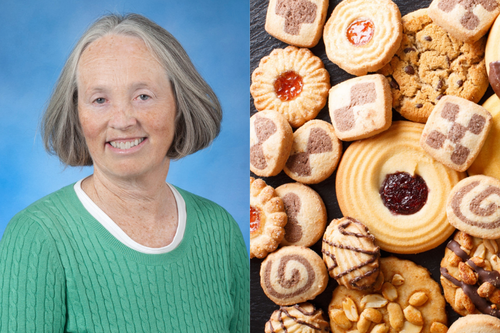
With the holiday season underway, it can be hard to avoid the temptation of tasty treats. What are some strategies to help best maintain control of one’s eating habits during the holiday season?
Joanne Slavin, Ph.D., a professor in the Department of Food Science and Nutrition in the University of Minnesota’s College of Food, Agricultural and Natural Resource Sciences (CFANS), answers questions about how to make wise food choices for good, overall health and to avoid gaining those extra holiday pounds.
Q: What are some basic eating strategies (whether at home or ordering out) to keep in mind over the holidays?
Slavin: Holiday traditions take on new meaning when we can’t gather to share foods that have meaning in our lives. Try and keep important traditions alive, but revamp to abide by rules of social distancing. Sharing food traditions over Zoom may not be ideal, but they can help us weather this challenging holiday season together safely, while maintaining holiday customs. Delivering favorite foods to your loved ones is another way to do that.
Q: Does COVID-19 change how people should approach holiday eating habits differently this year?
Slavin: Absolutely. Our ability to gather around the family dinner table — at grandma’s or our own home — is limited by COVID-19. In following public health guidance, we can look forward to better days in 2021. So work to keep important eating traditions alive for your family and friends, but don’t risk the health of your community by insisting you have to have the usual cookie exchange at grandma’s house. Remember that older folks are particularly vulnerable, but also need to know that you love them. So find new ways to share food and fellowship with family and friends.
Q: Are there particular considerations for people who are following heart-healthy diets (e.g. pre-diabetic or are managing other conditions) — foods to be sure to moderate or avoid?
Slavin: COVID-19 is more risky for those with health conditions, so diseases like obesity, cardiovascular disease and cancer make you more susceptible. Our usual dietary guidelines, moderation and variety, continue to be our guiding principle. Of course, our usual holiday favorites tend to be high in fat and sugar. But we can balance higher calorie choices with vegetables, whole grains, fruits, and legumes and put together healthy menus. Food safety continues to be a concern, so make sure you don’t leave that stuffed turkey sitting around as you check out the football game. Even more important, don’t stuff the turkey at all. Cook the stuffing separately and fill it with healthy ingredients like fruit, nuts and vegetables. Outside is the healthiest place to be right now, so new traditions like family walks, flag football and ice fishing make it possible to enjoy all those tasty holiday treats.
Q: Are there tips or tricks to prevent feeling so sluggish after a big meal? How many holiday desserts or drinks is too many?
Slavin: Unless you have figured out a way to avoid gaining weight with Zoom calls and working from home, no need to indulge in those traditional holiday eating episodes. Skip a few of the side dishes or keep the pie and ice cream for a later eating episode. If you are lucky enough to have excess food at your house, donate to a food shelf. New dietary guidelines for Americans that will be released soon say that alcoholic drinks should be limited to one per day for both men and women — so anything beyond that should not be justified as healthy. Even if it is red wine!
Q: What does your work in food science and nutrition show?
Slavin: Most of my work currently is on the relationship between dietary exposure and the microbiota. We know that dietary fiber is an under-consumed nutrient in the U.S. and the best way to alter the microbiota in a healthy direction is higher intake of dietary fiber. We also work with fermented foods and live microbes — such as yogurt, sauerkraut and tempeh — in identifying their health benefits. Plant foods are widely promoted, and carbohydrate staple foods, such as potatoes, rice, pasta, tortillas, and bread, can form the basis of our diets and provide important plant protein. To get the nutrients you need daily, make sure you get the recommended servings from myplate.gov. Otherwise, you will be low on shortfall nutrients, including dietary fiber, potassium, calcium and Vitamin D. You can get Vitamin D in our wonderful Minnesota sunshine. Be sure to bundle up and take part in activities that get you moving safely during COVID-19 and the winter months, so you can enjoy those holiday cookies.
Joanne Slavin is a registered dietician and professor in the Department of Food Science and Nutrition at the University of Minnesota who teaches Advanced Human Nutrition. She has authored more than 300 scientific articles on dietary fiber, carbohydrates, whole grains, protein, snacking, and the role of diet in disease prevention, and is a member of numerous scientific societies, including the Academy of Nutrition and Dietetics (AND) and the American Society for Nutrition (ASN).
- Categories:
- Health




